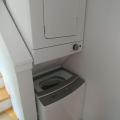Scope
Install a new ventless clothes dryer.
- Select an energy-efficient electric ventless condensing clothes dryer.
- Look for ENERGY STAR-certified models.
- Consider a heat pump clothes dryer.
- Install the new condensing clothes dryer.
See the Compliance Tab for links to related codes and standards and voluntary federal energy-efficiency program requirements.
Description
Conventional vented clothes dryers pull air from the room, heat this air, blow it into the tumble chamber of the clothes dryer, and then exhaust the moisture-laden air through a vent to the outside. This process consumes and wastes a lot of energy, as is evident in the high temperature of the exhaust air. Because they exhaust air outside, conventional electric or gas clothes dryers contribute to the depressurization of the home, which will pull unconditioned air into the home from locations such as the garage, attic, crawlspace, or outside. They could also potentially encourage conditions for backdrafting of atmospheric vented combustion appliances if there are any located in the home. Because they pull in unconditioned air and pull conditioned air out of the home, they can also cause the heating, ventilation, and air-conditioning (HVAC) equipment to work harder.
Electric ventless clothes dryers, on the other hand, operate without exhausting air out of the home or depressurizing the space. They also operate more efficiently and do not require access to an exhaust route. Ventless dryers are also called "condensing dryers", because they condense and drain the moisture from the clothes (Figure 1). Condensing dryers take in ambient air, heat it in a heat exchanger, circulate it in the drum to absorb moisture from the wet clothes, send it to the heat exchanger where the air is cooled, releasing the moisture to a condensate drain, then recirculate the air to the heat exchanger to repeat the process until the clothes are dry (ENERGY STAR Clothes Dryers 2017). These units are electric-powered, so there is no need to install and connect gas lines. Because they are ventless, there is no need to add an exterior hole in the wall and no time spent installing and connecting a vent duct. This means they’re easier to install, and they remove the fire risk associated with a clogged dryer vent. Since they dry clothes at lower temperatures, condensing dryers are gentler on clothes than conventional dryers.
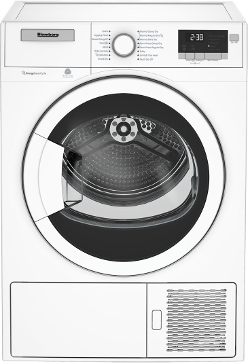
Condensing dryers can use electric resistance as the heat source, or a heat pump. If a heat pump is utilized, the dryer is called a heat pump dryer (Figure 2). Heat pump dryers tend to be the most efficient type of condensing dryers. Ventless dryers (whether heat pump or electric resistance) are appropriate to replace standard gas or standard electric units.
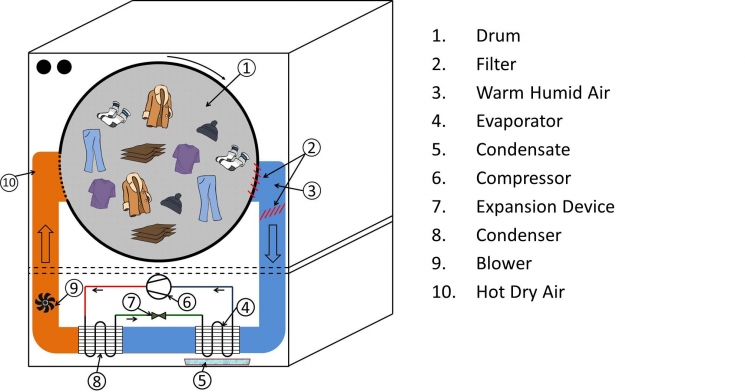
In May 2014, the U.S. Environmental Protection Agency (EPA) announced ENERGY STAR criteria for electric and gas clothes dryers, to recognize models that cut energy use by 20% compared to the federal minimum efficiency requirements that went into effect in 2015 (Figure 1). Over 80% of U.S. homes have a clothes dryer, accounting for 6% of residential electricity consumption. Dryers achieving the ENERGY STAR label reduce energy use with improved moisture sensors, auto shutoff, steam cycle options, and optional connected and smart grid features. Among the most efficient models are condensing dryers, which can save 20% to 60% compared to conventional clothes dryers.
However, there are some issues to consider when purchasing a condensing dryer. They can be more expensive to purchase and many of the models available are small or medium sized rather than large sized. They may also take longer to dry a load of clothes, potentially double the time of a conventional dryer. The dryer should be located in a part of the home that maintains a temperature of at least 40 °F for the condensing dryer to work properly. Ventless dryers require some periodic maintenance. The condenser should be rinsed and cleaned once every few months. The condensation (water) must be drained or emptied after each load. The secondary lint traps should be emptied monthly.
Condensing dryers release heat to the space they are in. Do not install the condensing dryer beside a refrigerator since the warm air exhausted by the dryer can cause the refrigerator to work much harder. Make sure the room in which the dryer is located has sufficient airflow (e.g., not a small enclosed or tight room without windows).
How to Select and Install a New Energy-Efficient Ventless (Condensing) Clothes Dryer
1. Select a new, energy-efficient ventless clothes dryer.
- Before choosing a new clothes dryer (or helping the homeowner to choose a new clothes dryer), use a tape measure to determine the space constraints in the spot designated for the clothes dryer.
- Use a tape measure to determine the space constraints of doorways and hallways to ensure that the new model can be moved to its installation location.
- Choose a condensing clothes dryer model that meets the needs of the household. The following criteria should be considered during the selection process: capacity/volume, space, features/controls, connectivity, and energy efficiency.
- Note the location of the lint traps and condensate tray (if not draining the condensate) to ensure they can be accessed easily for routine maintenance.
- Use the ENERGY STAR Product Finder to identify and determine the energy use of new ENERGY STAR-certified condensing clothes dryer models (Figure 3). The “Other Features and Characteristics” filter can be used to identify condensing clothes dryer models with connected functionality, which would allow the homeowner to potentially save more money if the utility company offers demand response services. Also see which clothes dryer models earned ENERGY STAR’s Most Efficient list for 2021.
- Check the Database of State Incentives for Renewables & Efficiency® or the ENERGY STAR Rebate Finder to determine whether a condensing clothes dryer model is eligible for a rebate or incentive in your area.
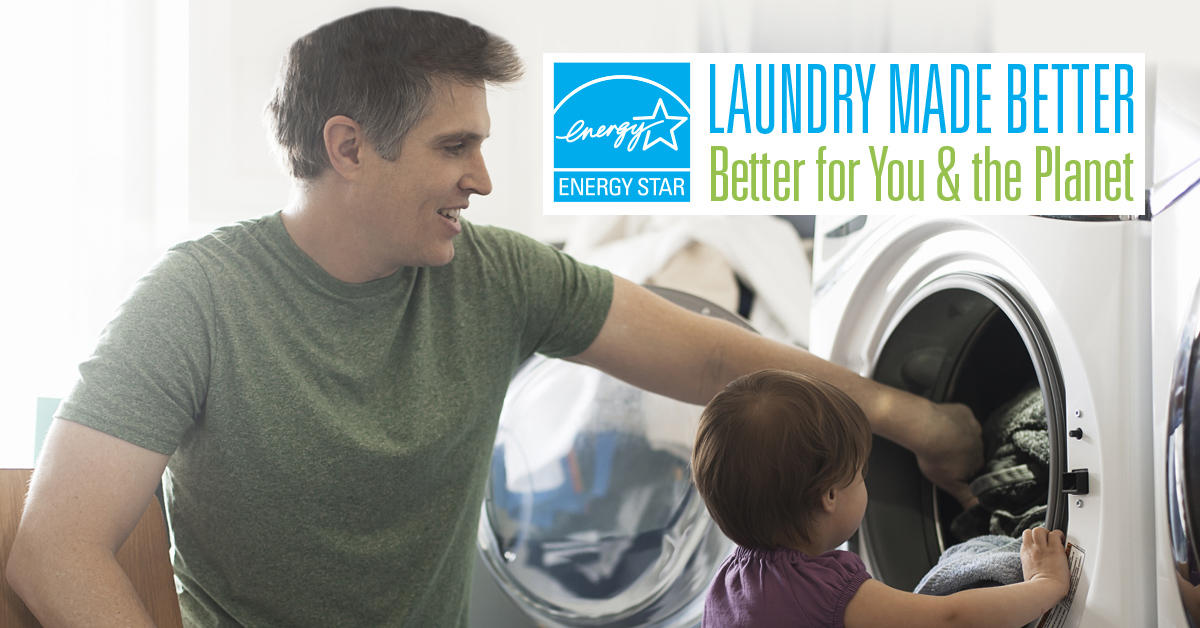
2. Install the new ventless clothes dryer.
- Use a dolly or hand truck to move the new condensing clothes dryer close to the area where it will be installed. Before doing so, put floor mats or paper along the route to protect the floor. Sweep out the dryer location to remove any dust or dirt. Make sure the temperature at the dryer location will stay above 40 °F or else the condensing dryer will not operate properly. Do not install the condensing dryer beside a refrigerator since the warm air can cause the refrigerator to work harder. Make sure the room in which the dryer is located has sufficient airflow (e.g., is not a small enclosed or tight room without windows).
- Remove the packaging from the condensing clothes dryer. Ask the homeowner to keep the box and packaging materials for a few days in case the unit has to be returned for replacement or repair.
- Shut off power to the condensing clothes dryer at the breaker panel and place a piece of tape over the breaker switch to ensure no one turns it back on while you’re working.
- Before moving the dryer into its designated space, determine a method for condensate disposal.
- Condensate Disposal
- When clothes drying is in progress, condensed water is pumped into a container using the drain hose in the back of the dryer. If the homeowner prefers to use the container to collect the condensed water, remind the homeowner that it must be emptied after each cycle.
- The condensed water can also be drained directly into a utility sink or drain. If draining into a sink or drain, make sure the drain line is within the maximum head and length specifications in the user’s manual. If the drain line is not long enough, extensions are available as aftermarket accessories. Make sure the drain line is not kinked.
- If draining into a waste water standpipe, connect the drain line into a non-return valve using a clamp. This valve will prevent water from flowing back into the dryer. Then, attach the other end of the non-return valve to a second, shorter drain line using a clamp. Connect the end of this drain line to a sink-connecting nut using a clamp. Attach the sink-connecting nut to a connector at the Y-adapter attached to the sink wastewater stand pipe.
- If draining directly into a utility sink, use a clamp to attach the drain line to the water tap or edge of the sink. Use the curved guide to prevent the drain hose from becoming kinked. Before securing the clamp, slowly guide the drain line so the end is near the tub of the sink.
- Connect the electrical cord into a grounded three-prong outlet. Do not remove the ground prong, do not use an adapter, and do not use an extension cord. Failure to follow these instructions can result in fire or electrical shock.
- Move the dryer into its footprint, adjust the feet to leave an airflow gap of at least 3/8-inch between the floor or top of carpet and the bottom of the dryer. This airflow gap must not be blocked by the toe-kick panel.
- Make sure the dryer is level by adjusting the feet and checking a leveler tool to ensure the dryer top is horizontal and the sides are vertical.
- Turn the power on at the breaker.
- Test run the condensing clothes dryer. Make sure there are no leaks in the drain line. If the dryer isn’t drying clothing properly, contact the seller or manufacturer and ask for assistance.
3. Set up an Internet-connected ventless clothes dryer.
- The condensing clothes dryer manufacturer will have an app available for download on a smartphone, tablet, or other mobile device. Download the app on the homeowner’s preferred device. The app will guide you through all of the steps to connect the condensing clothes dryer. Different manufacturers and models have different steps for network connection. The following steps are generalized.
- Open the app on the device and sign in or create a WiFi connect account. This account will allow you to associate any connected appliances with the homeowner’s device.
- Find the connected appliance information label on the condensing clothes dryer. This label contains the network name and password for the unit.
- In the app, type in the password from the information label.
- Go to the mobile device’s WiFi settings and choose the network name found on the information label. This will start the communication between the app and condensing clothes dryer.
- Once the communication between the mobile device and condensing clothes dryer is complete, the app will ask the user to choose the home network. Find the home’s WiFi network and enter the password to connect the device to this network.
- Communication between the mobile device and the home network will begin, connecting the condensing clothes dryer to the home network. The condensing clothes dryer is connected once the app says “connected.”
4. Provide product literature and instructions to the homeowner.
- Provide the home owner with any manufacturer product literature and warranty information.
- Submit, or supply to the homeowner to submit, paperwork for any applicable utility rebates or tax incentives.
- Provide the homeowner with tips for getting the most energy-efficient performance from their clothes dryer. Here are some resource-saving clothes-drying tips for homeowners:
- Dry full loads.
- Dry towels and heavier cottons in a separate load from lighter-weight clothes.
- Don't over-dry clothes. If the condensing clothes dryer has a moisture sensor, use it.
- Clean the lint screen in the dryer after every load to improve air circulation.
- Consider air-drying clothes on clothes lines or drying racks.
Climate
No climate specific information applies.
Training
Compliance
Retrofit
SCOPE
Install a new electric ventless (condensing) clothes dryer as a replacement for an older electric or gas clothes dryer in an existing home.
- Select an energy-efficient condensing clothes dryer.
- Look for an ENERGY STAR-certified condensing clothes dryer model.
- Remove and recycle the old clothes dryer.
- Close off, insulate and air seal the dryer vent at the interior and exterior walls.
- Install the new ENERGY STAR-certified condensing clothes dryer.
- Please follow safe work practices as described in the U.S. Department of Energy’s Standard Work Specifications when replacing a clothes dryers in single-family and manufactured homes or multi-family homes.
DESCRIPTION
Approximately 81% of U.S. homes have a clothes dryer, making it one of the most popular household appliances, according to the Energy Information Administration (EIA) 2015 Residential Energy Consumption Survey. However, ventless dryers only make up 2% of the overall dryer market, and most are sold to homeowners with space or venting limitations. Of homes with a clothes dryer, nearly 11% have a model that is 15 years old or greater. Homeowners with old clothes dryers should consider planning ahead to purchase a new, ENERGY STAR-certified condensing dryer to start saving money on energy bills before the current unit breaks down.
How to Replace the Old Clothes Dryer with an ENERGY STAR-Certified Model
1. Select a new energy-efficient clothes dryer.
- See the Description tab for information on selecting the right model.
2. Disconnect and remove the old clothes dryer.
Plan ahead when helping homeowners remove and recycle their old clothes dryers. Clothes dryers contain metals and parts that can and should be recycled. In addition, depending on the area, improper disposal of appliances can be punishable by either a fine or jail time. Many municipalities offer curbside pickup of old appliances for little to no charge. Appliance recyclers will often remove and haul away an old clothes dryer for a small fee. If the homeowner purchases a new clothes dryer from a major retailer, the old unit can be hauled away at a small charge or for free when the new model is delivered. The U.S. EPA Responsible Appliance Disposal (RAD) Program provides information on how to locate a recycler in the area (Figure 1).
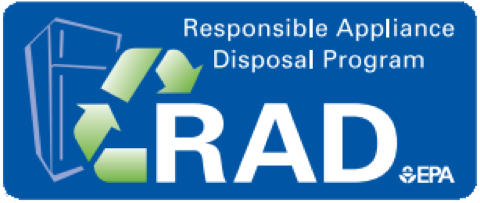
Figure 1. How to locate a recycler in the area. (Source: U.S. EPA.) - These are the items you’ll need to disconnect and remove the old clothes dryer: a moving dolly, duct tape, ropes or bungee cords, tie-down straps, and one person to help. A helper is especially important if you have stairs to maneuver.
- If it’s an electric dryer, shut off power to the clothes dryer at the breaker panel and place a piece of tape over the breaker switch to ensure no one turns it back on while you’re working. Unplug the electrical cord. Secure the cord to the back of the machine using duct tape.
- If it’s a natural gas-fired dryer, shut off the gas completely. Then, remove the supply hose from both the gas outlet and dryer.
- If the old dryer features a steam cycle, the water supply line will need disconnection. Turn off the water valve at the main before disconnecting the water line. Use a small bucket and old towels to drain any water remaining in the line.
- Disconnect the metallic vent duct from the back of the dryer and from the wall.
- After disconnecting everything, duct tape the dryer lid or door closed to prevent damage during loading and unloading. Place a piece of cardboard in front of the dryer to prevent scratches on the floor when you pull the unit out.
- Slowly pull the clothes dryer out of its footprint. Carefully slide the dryer onto the dolly and center it for equal weight distribution. Secure the dryer with bungee cords or ropes for extra support especially if moving up or down stairs. Consider using floor mats or paper to protect the floor. Consider wrapping blankets or other soft material around the dryer to protect doorways or cabinetry.
- Secure the clothes dryer to the vehicle using tie-down straps or bungee cords. Haul the dryer to the local recycler.
3. Close and seal the unused dryer vent.
- Since the new condensing clothes dryer will be ventless, you will no longer need the dryer vent. You will want to close this exterior hole since conditioned indoor air will escape the home and the hole provides easy entry for pests.
- The following items will be needed to remove the dryer vent: an electric drill, utility knife, work gloves, reciprocating saw, straight edge, blanket insulation, quick-set concrete, trowel, hammer, chisel, wire mesh or thin aluminum, and the wall material (bricks, wood siding, vinyl or aluminum siding).
- Remove the outside vent.
- The first step is to remove the exterior venting components. These components vary in design, but you will likely need a drill, wrench, or screwdriver to remove the screws or bolts that hold it in place.
- Use the utility knife to cut the caulk lines sealing the vent plate.
- Pull off the vent plate and pull out the vent.
- Scrape any remaining old caulk from the wall and vent hole.
- Add insulation.
- Using a straight edge and utility knife, cut a chunk of blanket insulation and place it into the hole.
- Press down on the insulation and then let it fluff back out.
- The insulation should fill the hole without protruding from either side.
- Another option is to use spray-in insulation to fill in and seal the hole.
- Insert wire mesh or thin aluminum.
- If you have a brick house, place a piece of wire mesh inside the hole after the insulation.
- Wear your work gloves to protect your hands.
- You will need to cut the wire mesh with a reciprocating saw to size it appropriately, making it slightly larger than the hole you’re filling.
- Press the wire mesh piece against the outside of the house and push it into the hole.
- The oversized wire mesh should stay firmly in place.
- If you have a wood or sided home, use a piece of thin, rigid aluminum to fill the hole.
- Wear your work gloves to protect your hands.
- You will need to cut the aluminum with a reciprocating saw to size it appropriately, making it slightly larger than the hole you’re filling.
- Press the aluminum piece against the outside of the house and push it into the hole.
- The oversized aluminum piece should stay firmly in place.
- If you have a brick house, place a piece of wire mesh inside the hole after the insulation.
- Close the hole from outside.
- If you have a brick house, you have two options: patch with concrete or match the existing brick exterior. You can fill the hole with quick-setting concrete, although you will be left with an area of the exterior that doesn’t match the brick. If you want to replace the bricks, you will need to use a hammer and chisel to create a rectangular space that aligns with the brick courses in the wall. Then, find matching bricks and use mortar to set the new bricks in place.
- If you have a wood house, find the matching exterior material and nail it into place.
- If you have vinyl or aluminum siding, you will need to purchase a new strip of siding and hook it into place.
- Close the hole from the inside.
- Match the interior wall material that the vent is set in. Because these holes are often in a basement or crawlspace, this is likely to be a poured concrete foundation wall. Fill the hole with quick-setting concrete and let it dry.
- If your dryer vent was in an interior room, you will need to cut the drywall out to the studs and replace it. Nail the new drywall to the studs, then tape, mud, texture, and paint the patch to match the surrounding wall surface.
4. Install the new clothes dryer.
- Many appliance vendors will install the new clothes washer. If you are installing it, use the installation instructions provided in the Description tab.
- Provide manufacturer’s product and warrant information to the homeowner as listed in the Description tab.
SUCCESS
You can use an infrared imaging camera to help determine if the old dryer vent hole has been thoroughly insulated and air sealed.
More
More Info.
Access to some references may require purchase from the publisher. While we continually update our database, links may have changed since posting. Please contact our webmaster if you find broken links.
The following authors and organizations contributed to the content in this Guide.
Pacific Northwest National Laboratory
Sales
Condensing Clothes Dryer = Ultra-Efficient Condensing Clothes Dryer
Condensing clothes dryers don’t require a vent. Instead of blowing the moisture outdoors, these appliances use piped in cold water to provide a condensing surface. Condensed moisture is collected during the drying cycle and most commonly sent down the same drain used for the clothes washer. Some are stand-alone dryers, while others are washer-dryer combos with a single drum. These appliances usually include an electric-resistance heating element, just like conventional clothes dryer. Because condensing clothes dryers don’t vent to the outside, they aren’t pulling air out of the house that residents have paid to cool or heat. These dryers do take significantly longer than conventional dryers.



